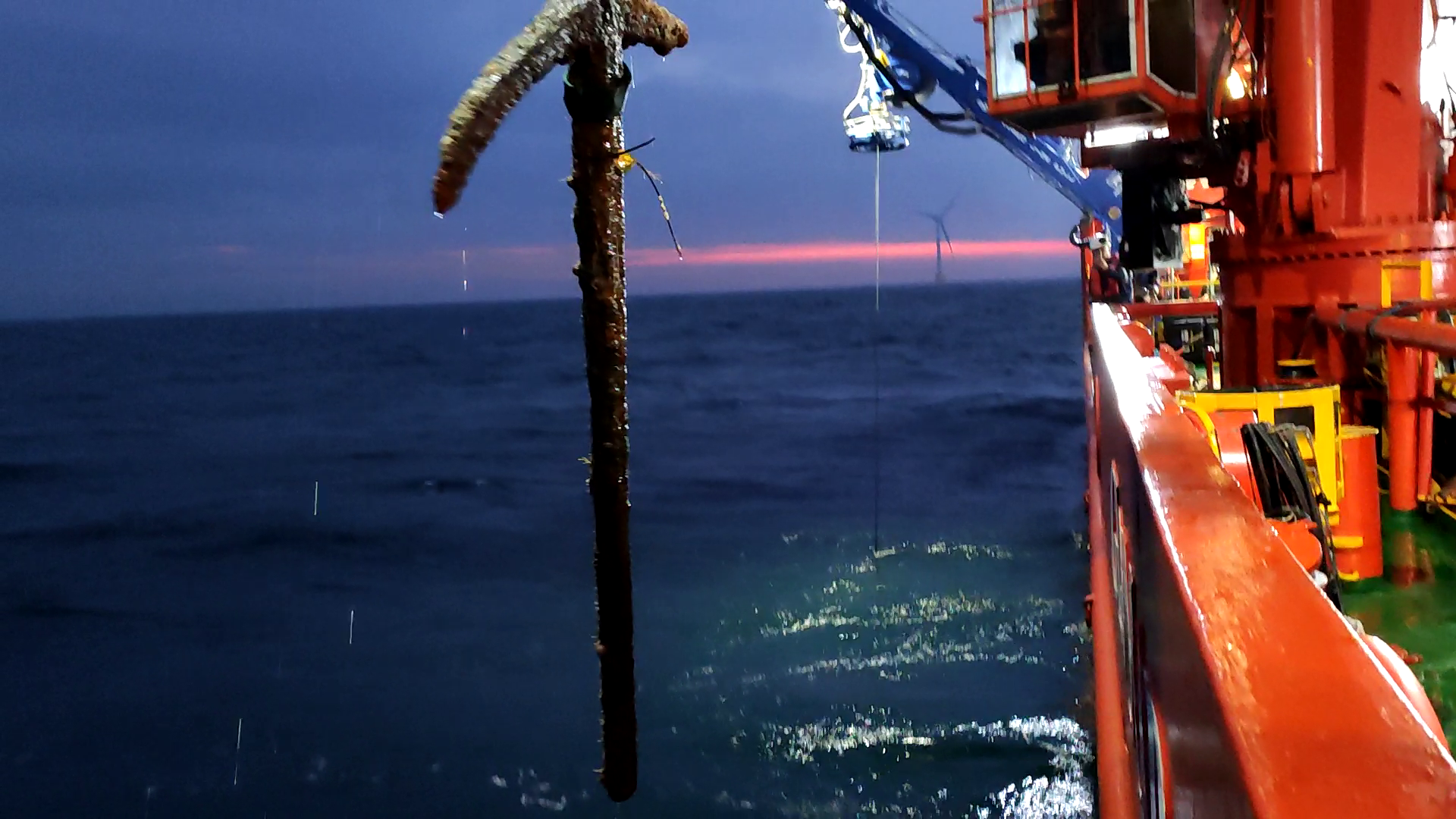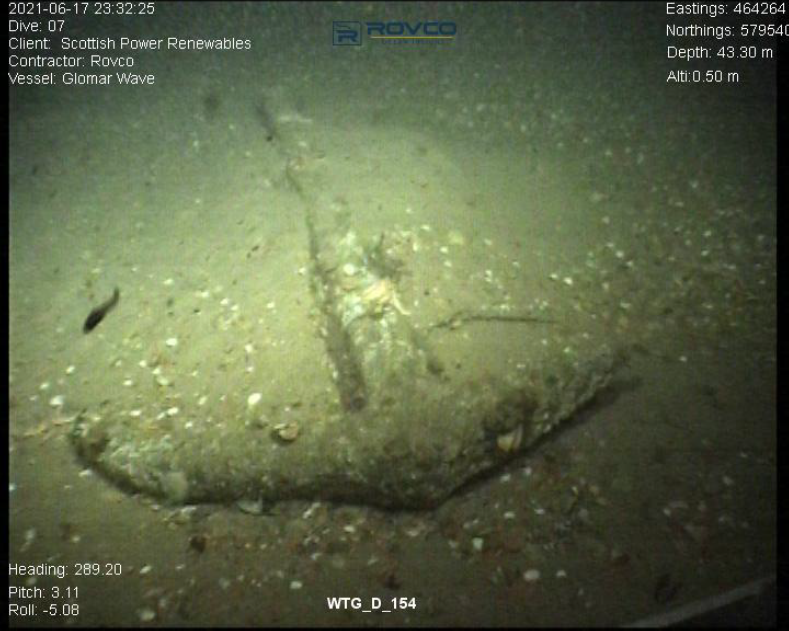Anchor found off coast of Scotland ‘may date back to Roman times’
The wrought iron artefact was discovered during a seabed survey off the coast of Suffolk.

Your support helps us to tell the story
From reproductive rights to climate change to Big Tech, The Independent is on the ground when the story is developing. Whether it's investigating the financials of Elon Musk's pro-Trump PAC or producing our latest documentary, 'The A Word', which shines a light on the American women fighting for reproductive rights, we know how important it is to parse out the facts from the messaging.
At such a critical moment in US history, we need reporters on the ground. Your donation allows us to keep sending journalists to speak to both sides of the story.
The Independent is trusted by Americans across the entire political spectrum. And unlike many other quality news outlets, we choose not to lock Americans out of our reporting and analysis with paywalls. We believe quality journalism should be available to everyone, paid for by those who can afford it.
Your support makes all the difference.An anchor discovered during survey works for an offshore wind farm could date from Roman times.
The 100kg (15 stone 10lbs) wrought iron anchor, which is more than two metres (6ft 6ins) long, was discovered during works for ScottishPower Renewables’ East Anglia ONE offshore wind farm.
It was first discovered in 2018 during marine seabed survey works prior to construction of the wind farm, around 25 miles off the coast of Suffolk.
Brandon Mason, of Maritime Archaeology Ltd, spent hours monitoring the anchor on the seabed and was on board an offshore support vessel as the anchor was raised more than 140 feet to the surface and taken to shore last year.
He said: “Everything points to this being a Roman anchor of almost 2,000 years old, which is an incredibly rare piece of history.
“If this date is confirmed, it would be hard to overstate its significance – we only know about three pre-Viking anchors from northern European waters outside the Mediterranean region and only two actually survived.

“We believe this find could be the oldest and one of the largest surviving examples, giving us hard evidence of the incredible amount of activity that must have been going on in the waters in Roman times, but that we know relatively little about.
“It’s an absolute privilege to bring the anchor to the surface and to share its story with people not just across the East of England, but right around the world.”
He said the anchor will go on permanent display, in conjunction with Colchester and Ipswich Museums, after further conservation work and analysis.
The anchor is believed to be somewhere between 1,600 and 2,000 years old and is estimated to have come from a vessel of 500 to 600 tonnes, according to those who have monitored it.
If dated to the time of the Roman occupation of Britain, they said it is most likely to have come from one of the larger merchant ships of the Roman fleet.
Analysis to confirm the age of the anchor is ongoing.
The Classis Britannica was the regional fleet of the Roman province of Britannia and the first navy of Britain.
It operated from the mid-first century to the mid-third century and employed merchant vessels to transport foodstuffs, troops, horses and war machinery such as catapults and rams.
Very little physical maritime evidence of this has been discovered.
Conservation works on the anchor are being carried out by ScottishPower Renewables’ commissioned specialists Maritime Archaeology Ltd, in conjunction with Mary Rose Archaeological Services, and with advice and guidance from Historic England.
The anchor is the latest in a series of historical finds during work on the wind farm.
These include a missing German submarine from the First World War and numerous artefacts from the Bronze Age, Iron Age, Roman and Medieval periods.
Other finds include a prehistoric monument dating back more than 4,000 years, complete with a rare Neolithic wooden trackway and platform and an ancient wild cattle skull radiocarbon-dated to around 6,000 years ago.
Ross Ovens, ScottishPower Renewables’ managing director – East Anglia Hub – said: “Our East Anglia ONE wind farm has proven to be an archaeological treasure trove – both onshore and offshore – and this latest find shows that it just keeps giving.”
Stuart Churchley, Historic England marine planning archaeological officer, said: “The discovery of such a potentially significant anchor of this date, among the vast seafloor expanse of the southern North Sea, is testament to the careful and methodical steps taken by the East Anglia ONE project.”
Councillor Carole Jones, Ipswich Borough Council portfolio holder for Ipswich Museums, said the anchor will only be available for visitors to “get a first peek” on Tuesday, before it is taken away for conservation work ahead of returning permanently to the collection in 2025.